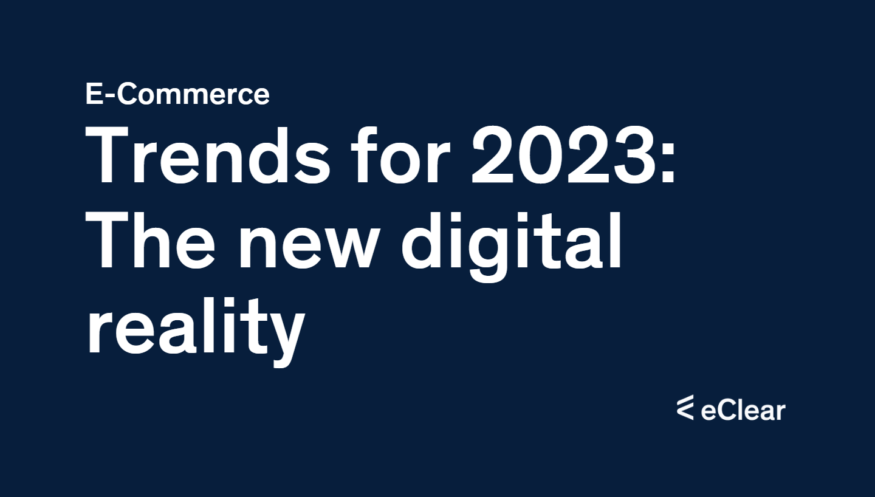First, the good news: online retail continues to thrive and grow steadily in 2023.
This followed a 12.1 per cent increase from 2020 to 2021, when total retail sales grew from $24.7 trillion to $27.7 trillion. According to a report by Statista, the 2021 global retail sales figures far exceeded market expectations. And regardless of what the final tally, one thing is clear: e-commerce is booming. And it will continue to do so!
Nevertheless, trends are emerging that are galloping towards innovation and cost reduction, with one goal in mind, namely: to achieve higher profitability and brand awareness.
The most relevant trends in online retail in 2023
So, the current e-commerce scenario is ticked off for 2022, but what are the most exciting and dominant trends in the coming year? Those that all the big brands are already driving in the global online retail market? Here is an outlook:
1. Omnichannel becomes standard in retail
Before COVID-19, omnichannel capabilities were more of an asset than a must. However, the opposite is true – the pandemic has demonstrated that potential customers expect to be reached in all possible formats and channels.
This means that e-commerce will provide sales opportunities through close integration with social media and provide a physical point of sale or pick-up. Generation Z is thanking us for smashing sales!
What does this look like in concrete terms? In the post-pandemic era, we can see an increase in services such as BOPIS (buy online, pick up in-store), buy online, pick up in-store and BORIS (buy online, return in-store) buy online – exchange in-store is now standard practice. Other combinations of physical and digital sales and collection are also conceivable.
E-commerce will likely come closer to physical retail in the future. But traditional retail shops will also move deeper into the digital world in the foreseeable future to meet the changing demands of customers.
2. Social commerce is on the rise
Instagram, Facebook, YouTube and co.: social media has become the industry standard for selling products and services.
This is a not-so-new reality that many small entrepreneurs still have to come to terms with. Because selling via Facebook or Instagram also needs to be learned – whether through storytelling, seeding strategy or online marketing. These are just a few example areas to consider.
Social media are so flooded with information, comments, and content that it is sometimes daunting and challenging to find the right place for a brand.
3. Artificial intelligence and machine learning are increasingly in focus
Artificial intelligence and machine learning (AI/ML) are the trends in the greatest degree in all areas – whether in professional life, online commerce or private life: We can no longer do without AI/ML. The online retail universe is no different, and AI and ML are being used and tested extensively in all areas of e-commerce retail.
To give a few examples: AI is being used for many things, from predicting possible behavioural changes in our customers to driving sales of recurring products or even channelling our customers’ journey by creating customer-centric search results in e-commerce search engines.
In practice, this can look like artificial intelligence giving different results to two people browsing an online fashion brand. Based on what the artificial intelligence has learned from previous visitors and user activity. In this way, Customer A is presented with a list of possible results that better matches their buyer persona and does not necessarily match Customer B’s list of results.
And in terms of machine learning, optimising pricing, predicting omnichannel marketing, and optimising logistics are just some current global applications of ML to improve online retail brands.
4. Augmented reality: the latest trend in online retailing
Augmented reality (AR) is fast becoming a standard format for companies to offer their goods and showcase their products. The concept is simple: using a smart device, you can see how the product fits your body or a specific spot in your home before you buy it.
This simple idea makes it possible to explore the quality of life according to the consumer. This is a trend that predominantly large furniture chains like IKEA pick up on and implement.
Even a product’s colour, design, or style can be changed and tried out virtually. A hardly imaginable development a few years ago!
5. Visual search in e-commerce
Visual search is a method in the search function that searches for content using images. Currently, the best-known and most widely used is Google Image Search.
Users can upload images to a “visual” search engine or application and find related content. The results are also displayed in a photographic format.
AI (artificial intelligence) has developed algorithms that enable image search. It can identify which elements appear in the photo uploaded by the user and compares them with the images indexed in its database. Then, the AI offers a list of results that match the features of the picture.
Based on this technology, many companies, and brands are already experimenting with the potential lead generation and sales that result from image searches. And when we combine this with the emerging technology of smart glasses, we have a powerful marketing tool!
6. Voice Commerce: Hey, Google!
Voice commerce is the ability to make online purchases using only your voice and a compatible smart device such as a mobile phone, hands-free device or virtual assistant.
Like its counterpart, visual search, voice commerce allows users to search for a specific result using voice commands and within a search engine that enables voice search and results.
Some best-known examples of voice search engines are Apple’s Siri, Amazon’s Alexa, Microsoft’s Cortana and Google Assistant.
So far, companies have begun experimenting with specific voice SEO. Techniques that aim to achieve the almost impossible feat of placing your brand or product as the only result in a particular voice search. Herein lies the main problem with voice commerce and why this trend was set last: You can only get one result per search query with voice commerce. This means that appearing in the first position for the desired keyword or phrase is imperative. Otherwise, customers will not even know that companies exist. Of course, this will change – in due course. The search engines will likely increase voice results or find a way to provide more possible answers – some of them are already experimenting with this – but so far, it is a grey area and a complex SEO scenario.
That said, voice-activated commerce has incredible untapped potential, especially for local businesses. Say you’re driving through town, and you’re desiring spicy burritos – and the navigation system in your car suggests the closest and highest-rated Mexican restaurant near your GPS location. In any case, this scenario has much potential!
Source: cross-border-magazine.com







